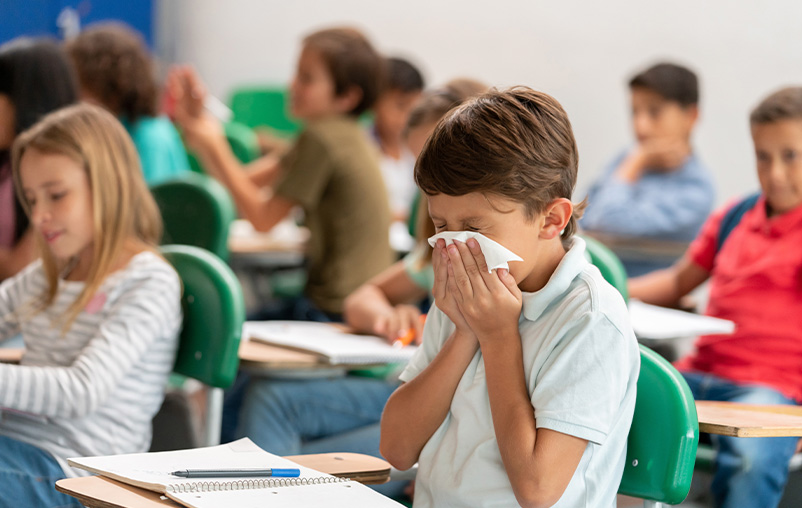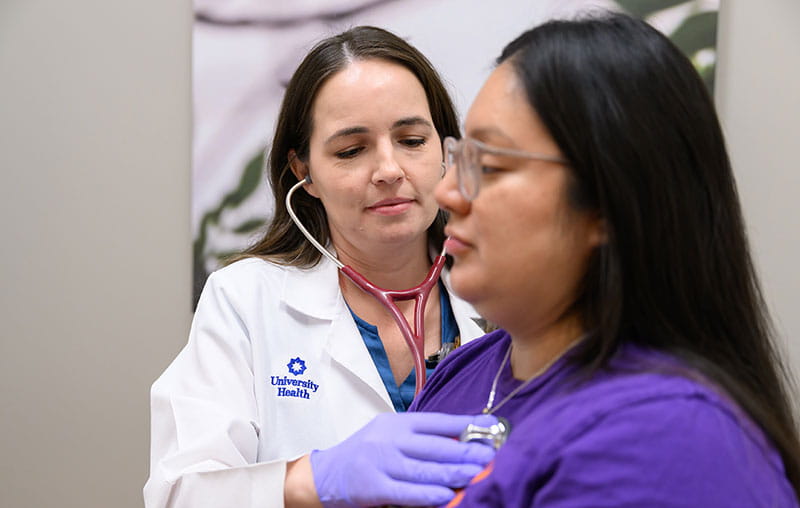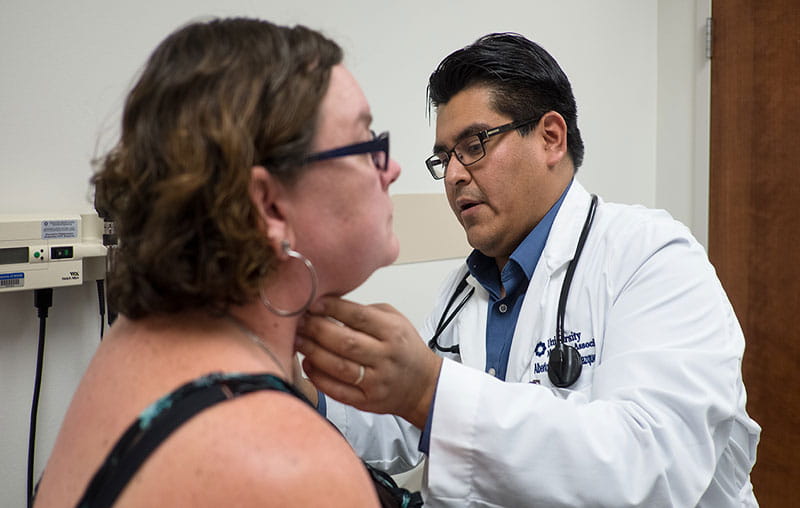The San Antonio Metropolitan Health District has confirmed the diagnosis of 16 cases of monkeypox in Bexar County, and the Centers for Disease Control and Prevention has reported 780 cases statewide.
While health officials say the risk to the general public remains low, the number of cases are expected to grow and the need to educate the public is vital.
Following is information for understanding, recognizing and reducing the likelihood of contracting the virus:
What Is Monkeypox?
Monkeypox is a rare disease caused by infection with the monkeypox virus, which is in the same virus family as smallpox.
Symptoms of Monkeypox
The symptoms of monkeypox are similar to the symptoms of smallpox, but they’re much milder.
In a typical case of monkeypox, people may experience:
- fever
- muscle aches and backache
- chills
- exhaustion
- swollen glands
- rash
Is Monkeypox Serious?
It often presents as a mild illness that lasts about two to four weeks. Like chickenpox, there might be scarring after the rash heals.
If you know that you’ve been exposed to somebody that has confirmed monkeypox, it’s important to reach out to your health provider. Public health might contact you because they’re doing contact tracing on people that have known exposures.
It tends to start as flat lesions and then it can progress to what looks like small bumps or pimples, and then move into blisters before it starts to scab over and eventually fall off with new skin, kind of like what you see with someone with chickenpox. The rash can be really painful initially, and then as it starts to scab and fall off, it can be really itchy.
If there are complications, such as sepsis or encephalitis, patients could be hospitalized. Most people do not need hospitalization, and death is extremely rare.
How do I get Tested for Monkeypox?
Testing for monkeypox right now is through a PCR test, but it’s PCR testing of skin lesions, so you have to have the skin lesion or rash to get tested.
Your provider will swab the top of the rash a couple of times, and those swabs will be sent off to the specialized lab where they do PCR testing to confirm that it’s monkeypox.
How Is Monkeypox Treated?
The Centers for Disease Control and Prevention has a stockpile of smallpox treatments that can be used to treat monkeypox. Most people do not need treatment and can manage their symptoms by staying hydrated and taking painkillers like Tylenol as needed.
How Is Monkeypox Spread?
Monkeypox spreads in different ways. The virus can spread from person-to-person through:
- Direct contact with the infectious rash, scabs or body fluids
- Respiratory secretions during prolonged, face-to-face contact, or during intimate physical contact, such as kissing, cuddling or sex
- Touching items (such as clothing or linens) that previously touched the infectious rash or body fluids
- Pregnant people can spread the virus to their fetus through the placenta
Monkeypox can spread from the time symptoms start until the rash has fully healed and a fresh layer of skin has formed. The illness typically lasts 2-4 weeks. People who do not have monkeypox symptoms cannot spread the virus to others. At this time, it is not known if monkeypox can spread through semen or vaginal fluids.
The incubation period after exposure is typically 7-14 days, but can range up to 21 days.
How can you reduce your risk for monkeypox?
Avoid close, skin-to-skin contact with people who have a rash that looks like monkeypox. Additionally:
- Do not touch the rash or scabs.
- Do not kiss, cuddle, hug or have sex with a person who has monkeypox.
- Do not share food or utensils with someone who is ill.
- Wash your hands frequently or use hand sanitizer.
Is there a Monkeypox Vaccine?
Yes, but vaccination supplies are very limited. Those who have been identified by public health officials as having close contact with someone who is infected with monkeypox are most likely to be vaccinated.
Those who were vaccinated against smallpox have some immunity against monkeypox.
JYNNEOS Vaccine for Monkeypox
JYNNEOS is the vaccine that’s currently available and recommended for preventing monkeypox. There isn't a huge supply of that right now. The vaccine manufacturer is working on making more JYNNEOS vaccine so that we can distribute it more widely in the United States and globally so we can cut down this outbreak faster.
JYNNEOS is a two-dose vaccine. By giving it through skin layer itself, not into the fat, you can still get a good immune response while using less vaccine. You can use one-fifth, or 20%, of the vaccine and still get a good response.
By doing that, we can extend the limited vaccine supply by five.
What should I do if I suspect a friend or family member has monkeypox?
If individuals have fever or rash, and a recent travel history to areas with monkeypox, they should isolate for two to four weeks — at least until the skin lesions heal. They should stay away from people or pets and contact their medical provider.





